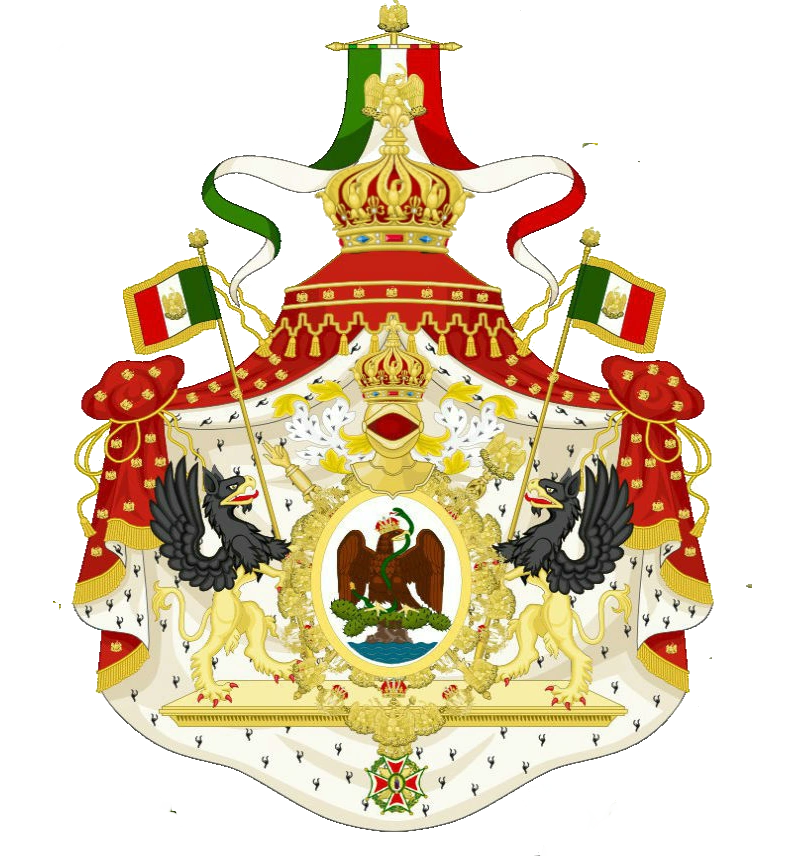
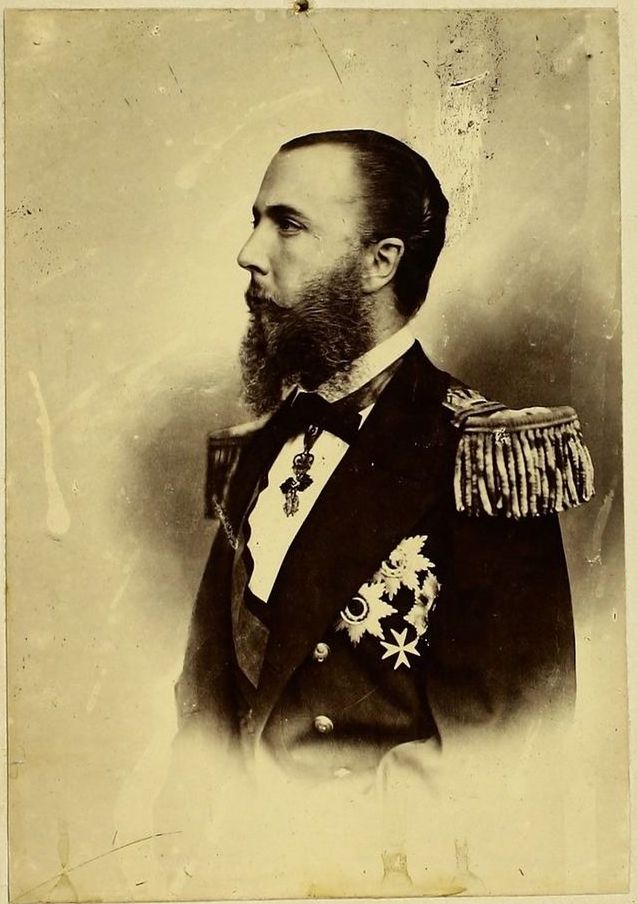
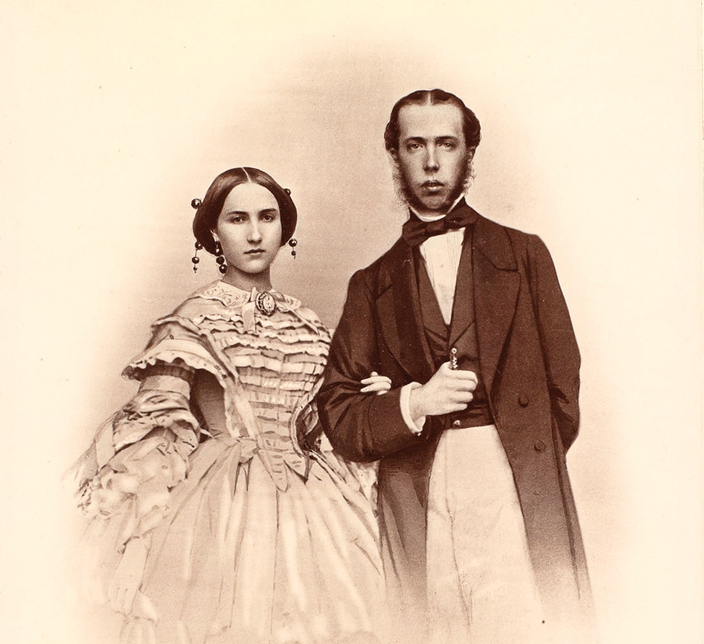

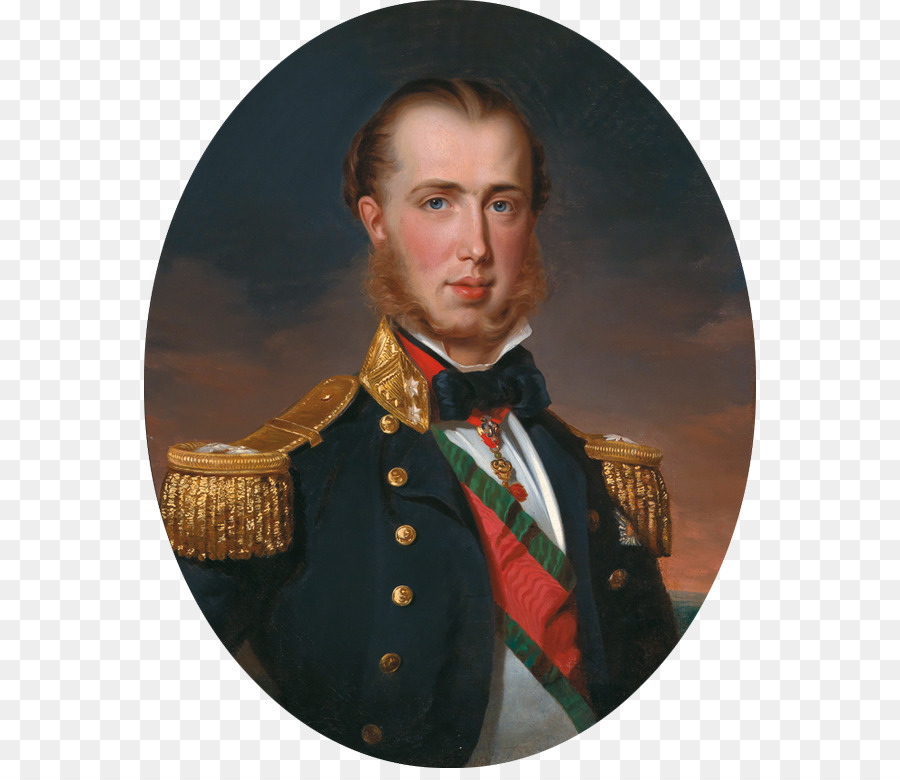

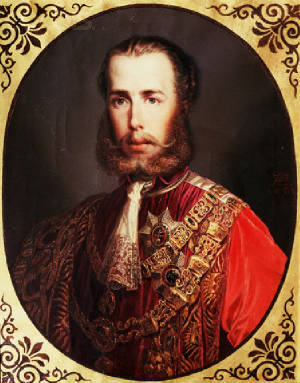


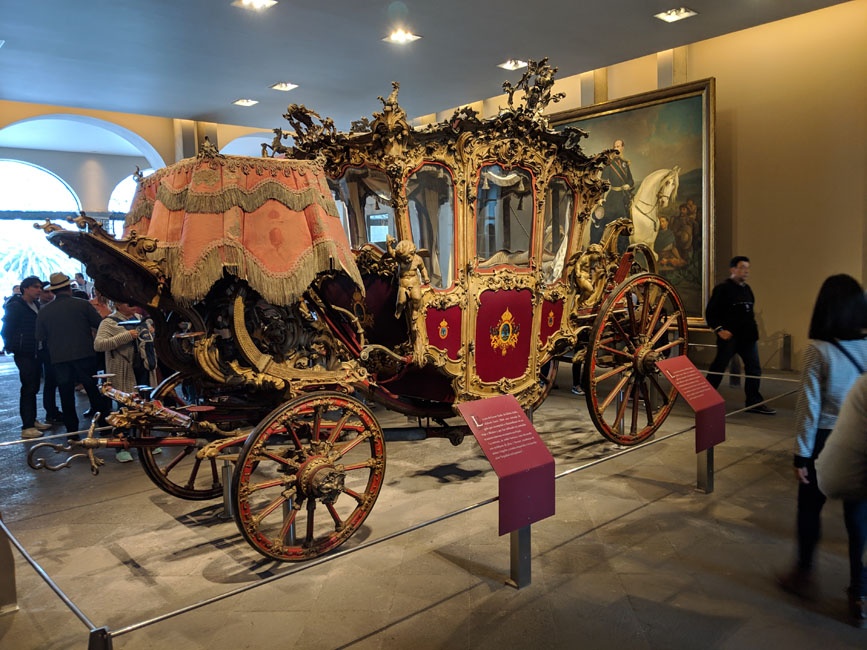

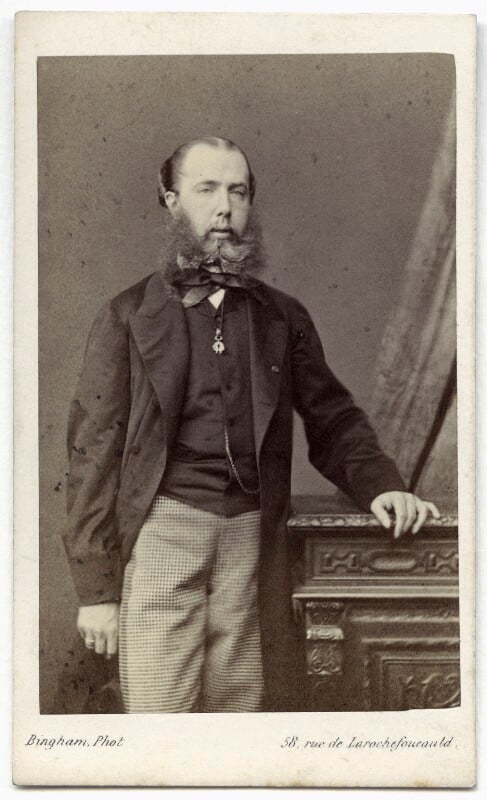



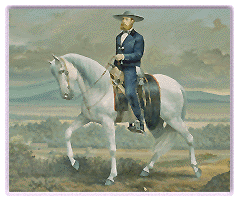
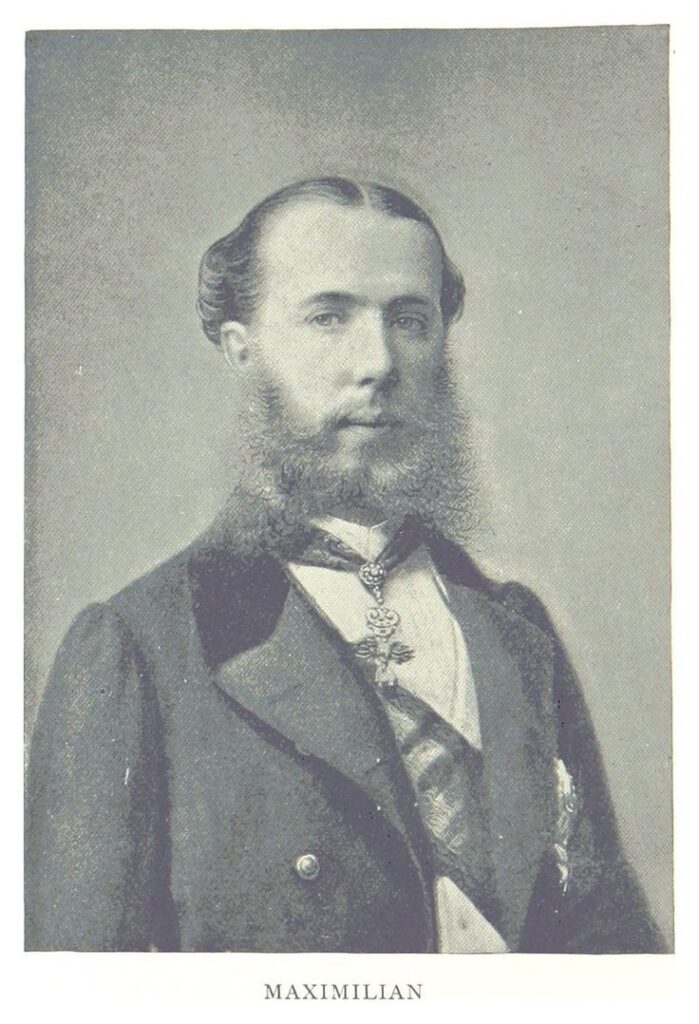

Following the Emperor Agustin’s abdication, Mexico became a republic and as expected things got progressively worse. In 1833 Santa Anna was elected President and three years later he lost the vast state of Texas to Sam Houston at the battle of San Jacinto.
Having learnt nothing from his defeat here, Santa Anna led the Mexican forces into a disasterous and ill advised war with the US in 1846 and went on to lose half of all Mexico’s territory. In 1853 under what is known as the Gadsden Purchase, he actually sold 77,000 square kilometres of Mexico (all of Southern New Mexico and Arizona) to the US for $10 million, pocketing most of the proceeds for himself. Finally in 1855 the appalling Santa Anna was overthrown.
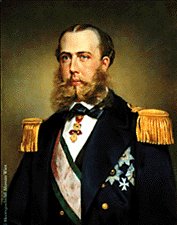
Things continued to go from bad to worse and became so bad that even among his opponents, many regretted the passing of Agustin and the Empire, which in comparison had been a sea of calm. Between 1822 and 1860 there were more than fifty changes of President and the actual form of government was changed no less than ten times. These fluctuated between total anarchy and outright dictatorship. In the same period there were over 140 military coups, a record that has yet to be surpassed.
In 1860 after yet another bitter civil war, with the backing of the United States, a ruthless and unprincipled radical native Indian lawyer by the name of Benito Juarez seized power. Juarez immediately instigated a bloody anti clerical policy and confiscated much of what was left of the church’s wealth. He also suspended all repayments on foreign debts, with the exception of those owing to the United States, to whom after all he owed his coming to power.
The suspension led to the principal creditors, Britain, France and Spain, sending a joint expeditionary force, which occupied the port of Vera Cruz in December 1861. Juarez fearing the worst gave in and repaid most of the outstanding interest and agreed to honour the debts. Britain and Spain withdrew, their claims having been honoured. But France continued the war marching inland and occupying Mexico City.
The France of Napoleon III had more ambitious goal in mind than merely the of recovery of her debts. Napoleon III heavily influenced by his romantically minded wife the Empress Eugenie, was bent of reviving the Mexican monarchy. He wanted to place a monarch on the throne who would promote the interests of France. The idea was not a new one but there was a new impetus. Prior to 1861 any interference in the affairs of Mexico by any of the European powers would have been viewed as a challenge to the mighty United States and no one wanted to provoke a conflict with them. However by 1861 the USA was embroiled in it’s own bloody conflict, the civil war. The war at home made the government in Washington powerless to intervene. And so encouraged by the Empress Eugenie, who saw herself as the champion of the emasculated Catholic Church in Mexico, Napoleon III took advantage of the situation.
Napoleon III saw the opportunity to make France the great ‘civilizing influence’ in the Western Hemisphere as well as enabling her to capture the South American markets. To give him further encouragement, there was his half brother, the Duc de Morny, who was the largest single holder of Mexican bonds and whose value was zero as long as Juarez as in power.
The candidate for the throne chosen by Empress Eugenie was the Archduke Ferdinand Maximilian brother of the Austrian Emperor. Aged 30 at the time, Maximilian was tall, romantic, very elegant and liberal. In other words quite the opposite of his conservative and practical brother Franz Josef. He was so different that rumours abounded that he was actually the son of the Duke of Reichstadt “The Young Eagle” and son and heir of Napoleon I. The Young Eagle had lived at the Austrian court until his untimely death at the age of 21 in the year of Maximilian’s birth. He had been a particular favourite of Maximilian’s mother who was utterly devoted to him. Whether this claim was true or not it might well have influenced Napoleon III in the choice of candidate. After all, if it were true they were cousins.
The figure of Emperor Maximilian of Mexico is usually portrayed as a tragic one. His fate was indeed tragic but far more than that his life was also heroic. He was a man who lived in the shadow of being the younger son. He wanted a serious role, one he could dedicate his life and energies too. He found it in Mexico.
Brought in as figurehead for the interests of France he proved to be anything but. His interests became that of Mexico and the Mexican people. When the French realized that they had bitten off more than they could chew and had anyway miscalculated as far as Maximilian was concerned they withdrew. Maximilian did not.
While his coming to power through the auspices of a foreign power, namely France, was something many could not and do not forgive, Maximilian really belongs in the realms of Mexico’s heroes not only for what he did but also for what he didn’t do. He saw himself in every sense as Mexico’s Emperor not France’s. Having accepted the role it was his duty to accept their fate, for better or worse.
The second son of Archduke Franz Karl and the Archduchess Sophie of Austria, Ferdinand Maximilian was born in the palace of Schönbrunn in Vienna on the 6th July, 1832. Ferdinand Max grew up a lively boy full of curiosity, with a romantic and imaginative nature. Although his mother’s favourite, he always maintained close and affectionate relations with his elder brother, the future Emperor Francis Joseph. His choice of careers led the archduke into the imperial navy where he very successfully reorganised and modernised much of the imperial fleet.
Ferdinand Maximilian loved the sea and the Adriatic coast, and he decided to build his legendary romantic castle of Miramar just outside the port of Trieste. In 1857 Francis Joseph appointed his brother to the post of governor-general in the Austrian held provinces of northern Italy, the Kingdom of Lombardy-Venetia.
On July 27, 1856, Ferdinand Maximilian who had lost his fiancé and great love of his life the beautiful Princess Maria Amalia of Brazil, daughter of Emperor Pedro Ist, when she died suddenly at the age of 21 in February 1853, married Princess Charlotte of Belgium daughter of Leopold I of Saxe-Coburg-Gotha, King of Belgium, and Princess Louise of France.
The Archduke Ferdinand Maximilian took up his residence at Monza outside Milan with his new bride and although the Austrians were far from popular in northern Italy and despite resistance from the military authorities, the vice-regal couple began slowly to win over many Italians. Ferdinand Maximilian’s liberalism aroused less enthusiasm in Vienna, however, where he was increasingly seen as being in opposition to his imperial brother’s government.
With the approach of war in 1859 against France and the north Italian kingdom of Piedmont-Sardinia, Francis Joseph relieved his brother of this office, blaming him for having added to the problems through his liberal attitude and gave full power to the military. Both the archduke and his wife bitterly resented this dismissal.
Ferdinand Max returned to his castle of Miramar and may well have lived out his life there quite contentedly writing poetry and improving the magnificent gardens but events across the Atlantic would soon put an end to his political inactivity.
In France Napoleon’s nephew Louis Bonaparte had ascended to power as Emperor of the French, taking the name Napoleon III. He had been trying to relive his uncle’s greatness and expand French power. When Mexico refused to repay their debts to France Napoleon III used it as a pretext for invasion.
Mexico already having been a monarchy once before, Napoleon III decided to re-establish it. In the first instance Mexican conservatives in Europe spoke out in favour of returning the monarchy to the nation and how the last Emperor had been martyred. In October 1863, Napoleon III arranged for a Mexican delegation to offer the imperial crown of Mexico to Ferdinand Max.
The archduke was not that keen but it became obvious that his highly ambitious wife, Charlotte, was. In the end Maximilian agreed to accept but he insisted that he would only do so on the condition that the Mexican people themselves wanted him as emperor.
Furthermore his brother the Emperor Franz Josef was against the idea but suggested that if he insisted on considering it, he should obtain the promise of support from Napoleon III secured in writing. The U.S. government protested at what was seen as an infringement of the Monroe Doctrine, but the civil war between the states prevented their taking any serious action.
After a favourable plebiscite in Mexico “organized” by the French, the Archduke Ferdinand Maximilian accepted the imperial crown at Miramar on the 10th April 1864. Four days later he and his wife went on board the ship S.M.S. “Novara” to set sail for their new homeland as the Emperor and the Empress of Mexico.
When Maximilian and Carlota left Europe they were given a fantastic send off in a ship flying the Mexican Imperial Standard. They received a blessing from the Pope and Queen Victoria ordered the Gibraltar garrison to fire a salute for Maximilian’s passing ship.
When the new Emperor and Empress arrived at Vera Cruz in Mexico, the populace greeted them with wild enthusiasm and it became one long fiesta. Maximilian was enchanted but after the party was over the imperial couple registered their shock at the living conditions of the poor in contrast to the magnificent haciendas of the upper class. The imperial couple were even more horrified to discover that their new realm was still embroiled in a civil war.
Furthermore Mexico’s finances were in a chaotic state. Worsened by the fact that Maximilian had incurred huge new debts from France, which included the upkeep of the French troops in Mexico. Maximilian ever the romantic was obviously not too worried by the dire financial state, as no sooner had he arrived in Mexico City, finding the city palace too gloomy after Miramar, he spent vast amounts enlarging and beautifying the hilltop castle of Chapultepec. He also acquired an enchanting country retreat at Cuernavaca.
Within a short period of time Maximilian had fallen in love with the beautiful landscape of his new country and it’s people. While French troops continued fighting the rebel forces Maximilian set about building museums and trying to preserve Mexico’s culture, which still remains one of his greatest contribution as emperor. Empress Carlota began holding parties for the wealthy Mexicans to raise money for poor houses.
The couple had by this stage accepted the fact that they could not have any children of their own so to secure the succession they adopted the heir of the original Mexican imperial house and his cousin, thereby not only securing the succession but also legitimising their position in the eyes of the monarchist supporters of the Iturbide’s. These adopted Mexican princes would succeed Maximilian with the name of Habsburg-Iturbide. Despite these measures Maximilian realized his throne was not secure. French troops told him it was not safe to ride outside of Mexico City.
The French had achieved the upper hand, but the liberals and the republicans were still offering bitter resistance under their president, Benito Juárez. Juarez had retreated to the north and was biding his time. He was confident that the Confederacy would be defeated and the government in Washington had steadfastly refused to recognise Maximilian, continuing to recognise “their man” Juraez as President.
If Maximilian was disillusioned and disappointed, his French supporters were soon equally disappointed in their new emperor. Far from governing in the interests of the French, Maximilian saw himself as a figure of national integration. The welfare of all his subjects was his first concern. One of his first acts as Emperor was to restrict working hours and abolish child labour.
He cancelled all debts for peasants over 10 pesos, restored communal property and forbade all forms of corporal punishment. He also broke the monopoly of the Hacienda stores and decreed that henceforth peons could no longer be bought and sold for the price of their debt.
He cherished the hope that his liberalism would enable a reconciliation with the republican opposition. He did not understand that they viewed him foremost as a French puppet.
Within a year of his arrival, the American Civil War ended and several regiments from the U.S. army amassed on the US Mexican border. The prospect of an US invasion to reinstate Juarez and the inevitable bloodthirsty reprisals that Juarez was so famous for caused a large number of Maximilian’s loyal adherents to abandon the cause and leave the capitol. The popular enthusiasm, which had greeted the imperial couple was eroding rapidly under the growing reality of a return of the Juarez regime.
Napoleon III realized his game was up and this in turn gave extra hope to the Juaristas. The Emperor Napoleon III came under massive domestic pressure to withdraw his French troops from Mexico. In spite of all his written assurances including one that promised support “in whatever eventuality that may arise” at the end of 1865 Napoleon III withdrew his troops and abandoned Maximilian to his fate.
Empress Charlotte was beside herself and in early 1866 returned to Europe to try to shame Napoleon into honouring his written promises to Maximilian, but he was deaf to all her pleas and threats. She sought support from the Pope Pio Nono who listened sympathetically but explained that there was nothing he could do. The desperation of failure plunged the young empress into the mania of a persecution complex and she broke down during the audience an audience with the holy father and had to be taken away. The Pope remarked “nothing is spared me in this life, now a woman has to go mad in the Vatican”.
Once the French troops pulled out they advised Maximilian to do the same. However, the Emperor held himself to his coronation oath and firmly thought of himself as a Mexican. Although he realized the danger he steadfastly refused to leave his country and people. Still believing that he was wanted, he did not wish to leave his loyal subjects in the face of danger.
Maximilian bravely fought on with his army of 8,000 Mexican loyalists. Leaving Mexico City on the 13th February 1867, after the rejection by Juárez of a renewed offer of peace, Maximilian marched to Queretaro where the Mexican Empire would make its stand. Here the imperial army fought with great heroism, withstanding a siege by the Juaristas of several weeks. Unfortunately, the jealousies and rivalries between his generals greatly reduced the effectiveness of Maximilian’s forces, and he and his troops were soon besieged in Querétaro by the advancing republican armies.
On the 15th May one of his closest aides Colonel López betrayed him and the town into the hands of the republicans. Maximilian and his loyal generals Miramón and Mejía were arraigned before a military tribunal and condemned to death. All the courts of Europe pleaded with Juarez to spare the Emperor’s life but the bloodthirsty Juarez would have none of it.
The Emperor met his death very bravely. He spoke only in Spanish and gave his executioners a portion of gold not to shoot him in the head so that his mother could see his face. He was executed by firing squad on the morning of June 19, 1867 at Cerro de las Campanas (the hill of the Bells). His last words were “:”I forgive everyone, and I ask everyone to forgive me. May my blood which is about to be shed, be for the good of the country. Viva Mexico, viva la independencia!” Despite having taken the money, the Juarista firing squad shot him in the face.
The two Mexican generals shot after him both died shouting “long live the Emperor”. After his death his heartbroken wife became hopelessly insane with grief and had to be locked away until her death. She believed she was still in Mexico and had a doll that she referred to as Max. Empress Carlota died in 1927
After difficult negotiations with an unwilling Juárez, who had to stomach the criticism of even friendly Washington, Maximilian’s body was returned to Austria. The same ship, S.M.S. “Novara”, which had brought him to Mexico, now carried his embalmed body back to Trieste and to its final resting place in the imperial crypt in Vienna.
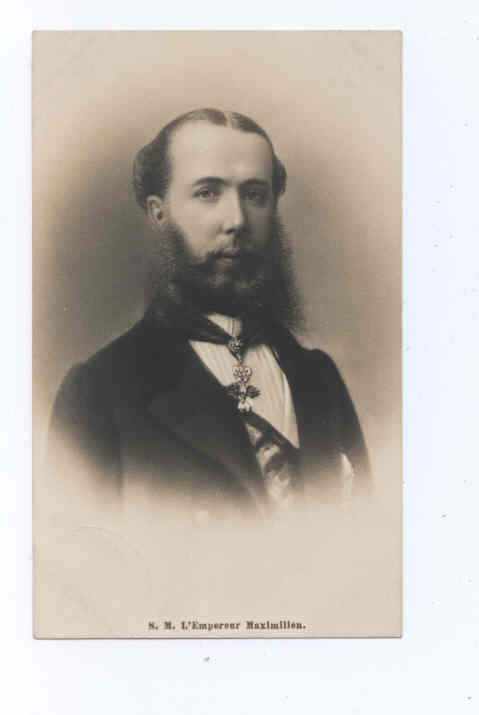
The tragedy of Maximilian was that he assumed the crown of Mexico in good faith and full of the very best of intentions. He was noble, upright and honest, and genuinely wanted to lead Mexico into an age of peace and prosperity. It was his fate to be deceived and eventually betrayed by the French, the political realities and the machinations of the dictator Benito Juarez. His essentially noble character never even allowed him to consider cutting his losses to save his own life. He was a Mexican.
One can only speculate as to what sort of Mexico he would have left behind had he succeeded. If Maximilian had ruled instead of Juarez. In the opinion of the authors of this piece, a far stronger one than that which faced the might of their Northern neighbour. One thing appears certain, the real tragedy of Maximilian’s life is that in the end his betrayal and death was more than anything the Mexican peoples tragic loss.
Chronology
1832: Archduke Ferdinand Maximilian born on 6th July, the second son of Archduke Franz Karl and his wife Sophie in Schönbrunn Palace, Vienna.
1851: Begins career in the Imperial and Royal Navy with the rank of lieutenant.
1856: The construction of his castle of Miramar near the Adriatic port of Trieste began.
1857: Ferdinand Max appointed the governor-general of the northern Italian provinces of Lombardy-Venetia. On the 27th July marries the Princess Charlotte of Belgium in Brussels.
1859: On the 19th April relieved of his post as governor-general. War breaks out between France and Piedmont-Sardinia.
1861: Napoleon III suggests Maximilian as a candidate for the throne of Mexico.
1863: In October a Mexican delegation arrives at Miramar to offer Maximilian and Charlotte the crown. Maximilian makes his acceptance conditional on a national plebiscite in his favour.
1864: On the 14th April Maximilian and Charlotte leave Miramar on board the Austrian ship NOVARA to sail to Mexico.
1865: End of the American civil war. Pressure on France to respect the Monroe Doctrine.
1865: Maximilian adopts Don Agustin and Don Salvador.
1866: Napoleon III orders the withdrawal of French troops from Mexico. The Emperor Maximilian refuses to desert his Mexican supporters. Charlotte sails to Europe to plead for help, growing persecution mania robs her of her senses. Republican troops on the advance in Mexico.
1867: Maximilian and his Imperial troops besieged in the town of Querétaro. The town falls through betrayal after 72 days. On 19th June the Emperor Maximilian and two loyalist generals executed by a republican firing-squad on the Hill of the Bells.
1868: On the18th January the body of Maximilian laid to rest among his ancestors in the Imperial Crypt of the Capuchin Church in Vienna.
